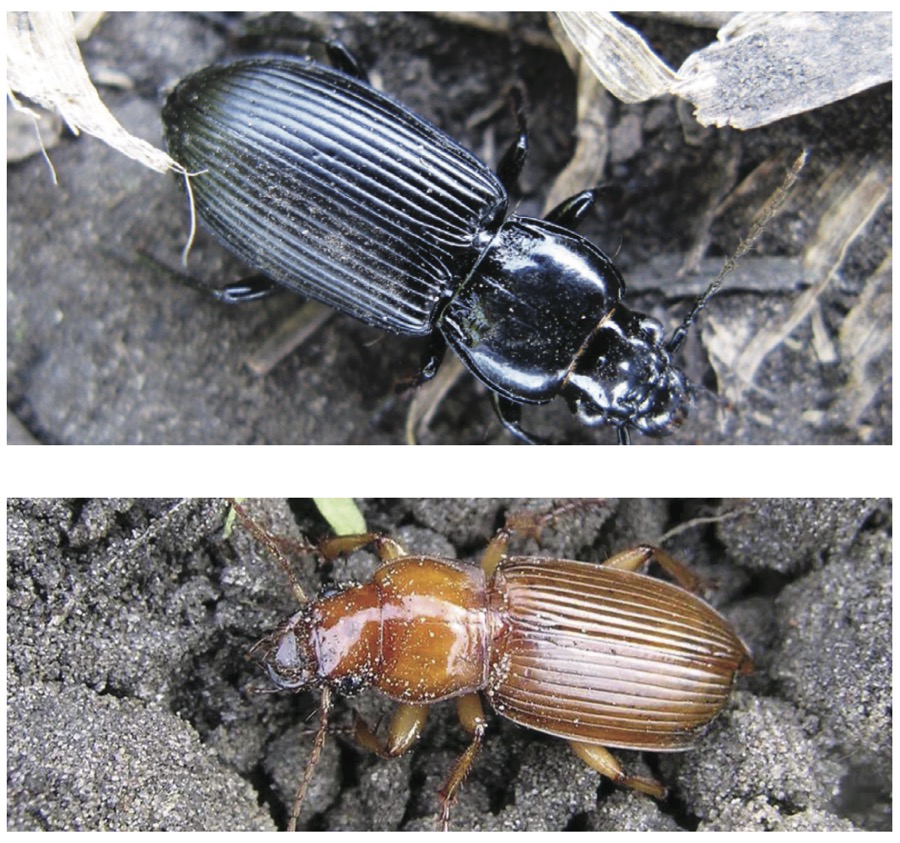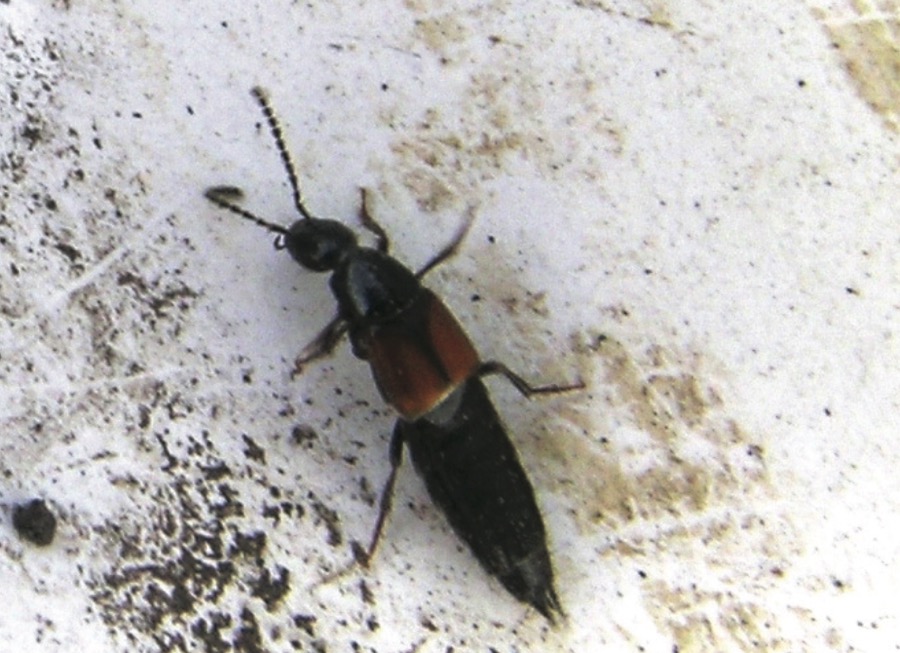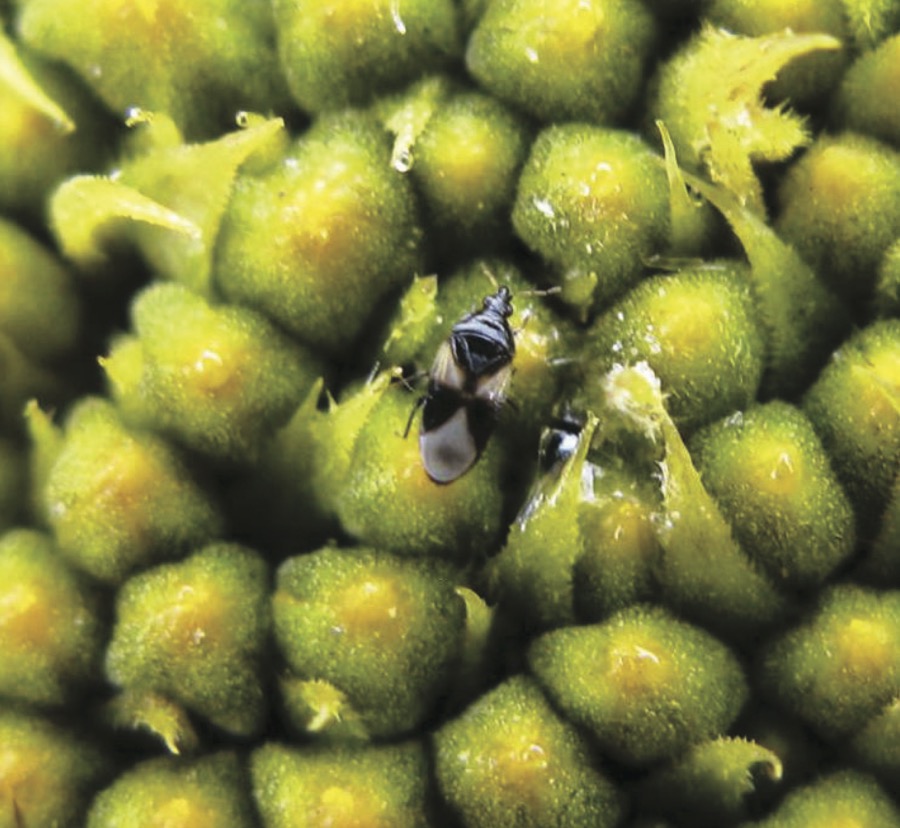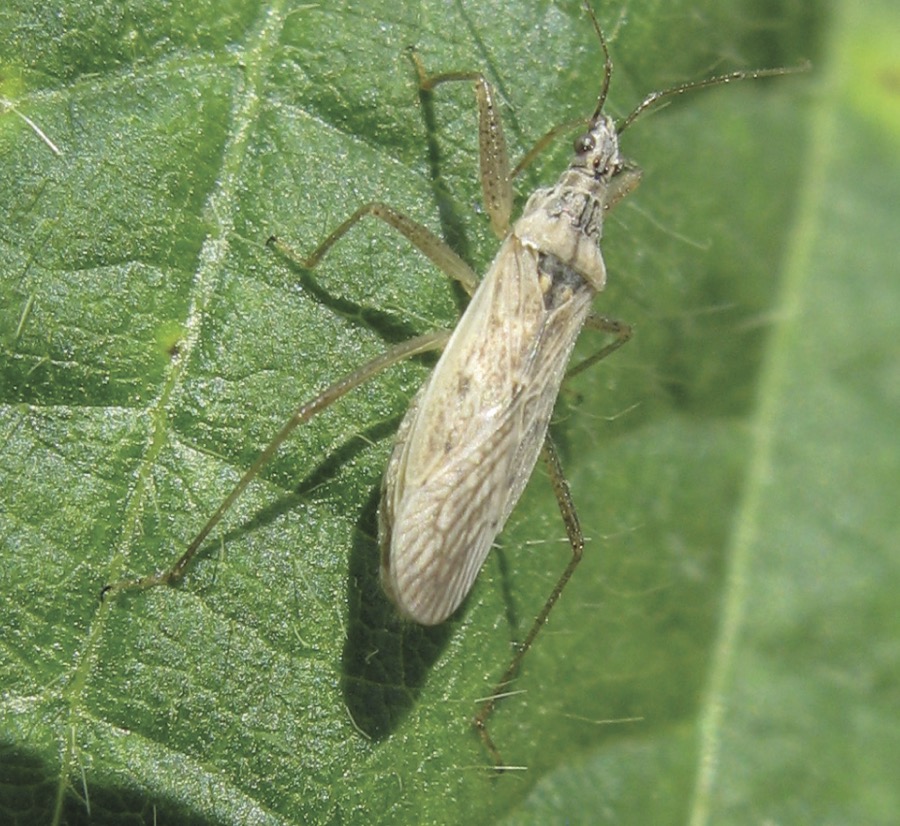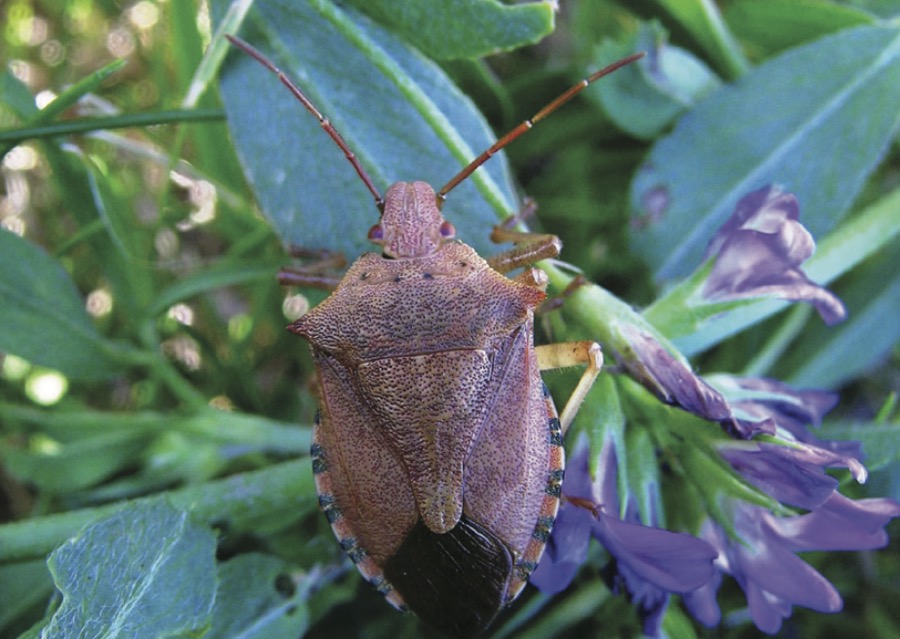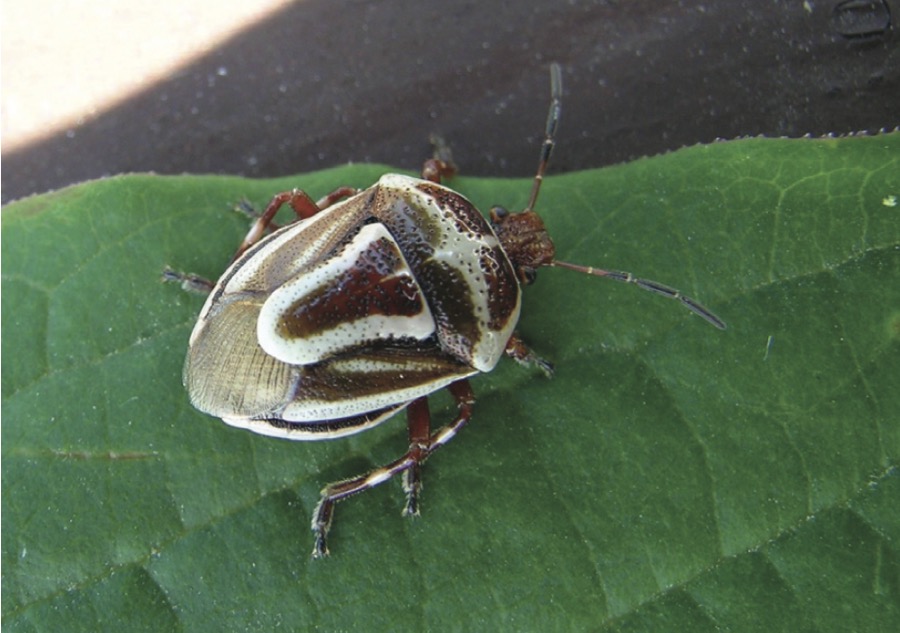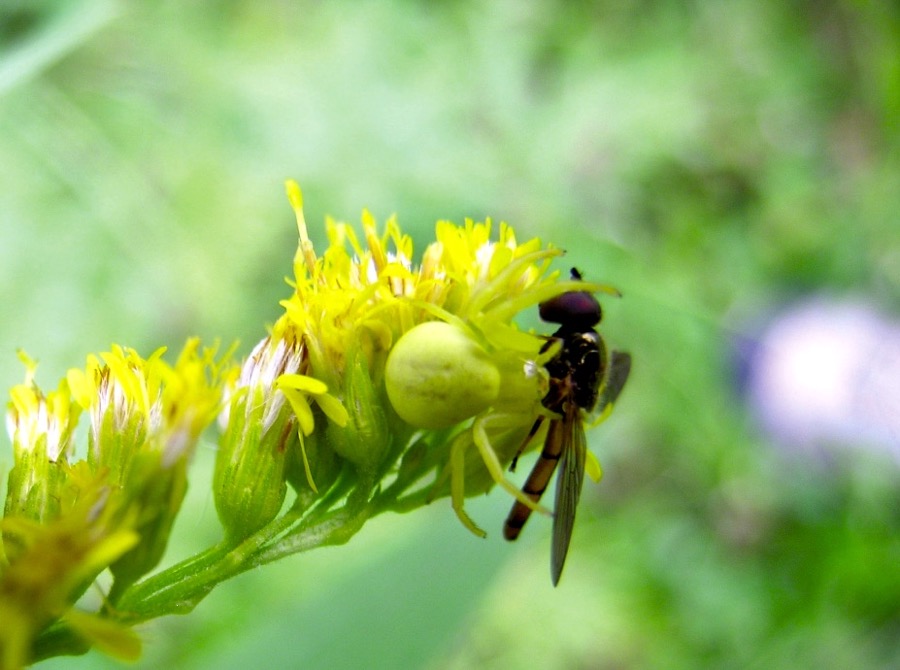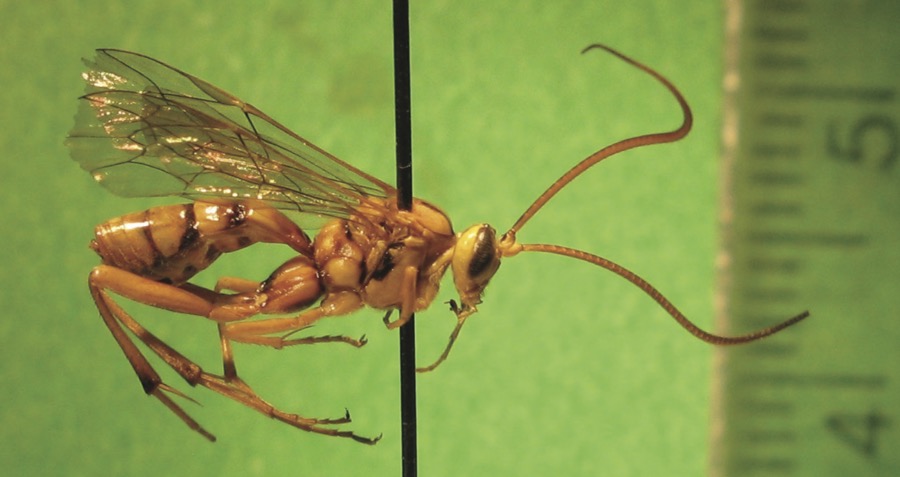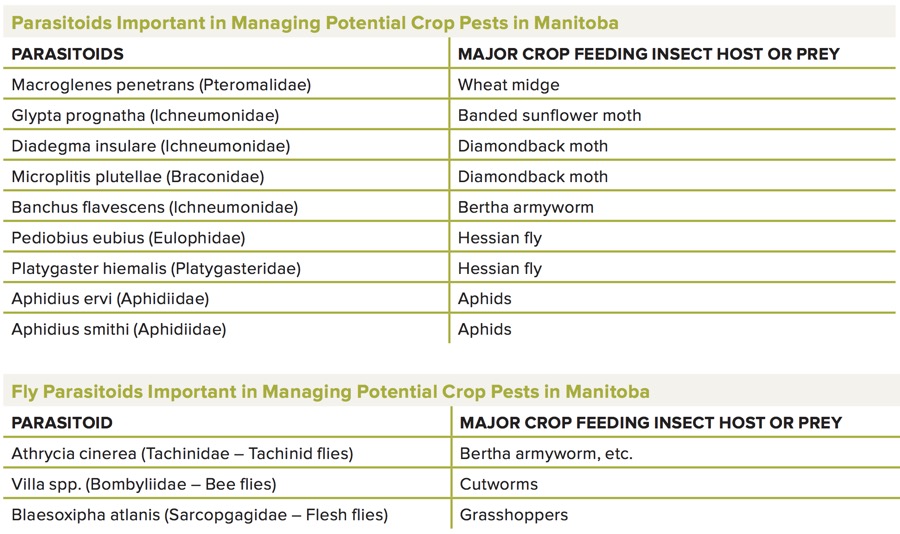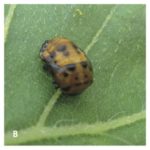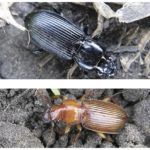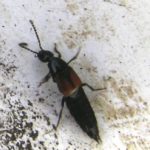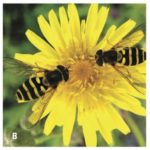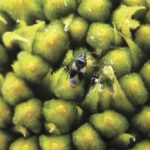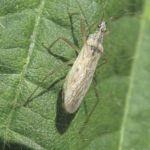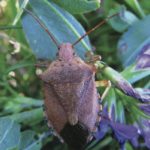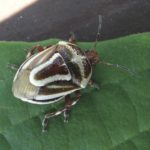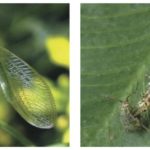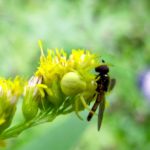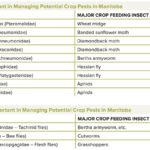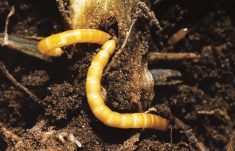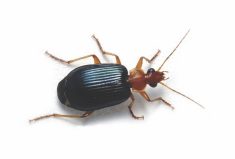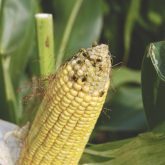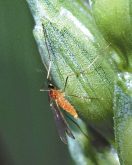
ladybeetles-ladybugs
Larva (a), pupa (b) and adult (c) of the seven-spotted lady beetle (Coccinella septempunctata). Lady beetles/ladybugs 56 species in Manitoba Identification: Although most can recognize adult lady beetles, many do not recognize the larvae. They are alligator-like in general shape and black with white, yellow, red or orange markings. What they eat: Aphids — if scarce they may feed on the eggs of moths and beetles, thrips, mites and other small insects as well as pollen and nectar. How much: In a Manitoba study adults of the thirteen-spotted lady beetle consumed between 110 and 160 aphids on average in 24 hours, depending on the species of aphid. An Ontario study found adult females of the seven-spotted lady beetle ate about 115 aphids in 24 hours, adult males ate about 80 in 24 hours, and third instar larvae ate about 105 in 24 hours.
Photo: John Gavloski/Manitoba Agriculture
ground beetles
Ground beetles (Carabidae) 861 species in Canada About 40,000 species worldwide Identification: Head at eyes narrower than section behind head. Front wings may have striations or pits. Run rapidly when disturbed. What they eat: Larvae of cutworms and diamondback moth; Colorado potato beetle, and root maggot eggs, larvae, and pupae; aphids. A species called Lebia atriventris has been observed feeding on larvae of sunflower beetles in Manitoba. A study in Saskatchewan found 14 species of ground beetles fed on larvae of wheat midge. How much: Larvae and adults of several species of ground beetles have been shown to eat many times their own weight in prey if given the opportunity. Most are nocturnal (active at night).
Photo: John Gavloski/Manitoba Agriculture
Rove beetles (Staphylinidae)
875 species in Canada – Identification: Adult rove beetles are slender. They have short wings; three to six segments of the abdomen may not be covered by the wings. They often run fast, sometimes with the tip of their abdomen bent upward. What they eat: Most adults and larvae are predaceous on insects, and a few are parasitic. Some species eat root maggot eggs and larvae. How much: Aleochara adults may consume up to five root maggot larvae per day. A pair may destroy 1,200 eggs and 130 larvae, and parasitize several hundred pupae during their lifetime.
Photo: John Gavloski/Manitoba Agriculture
Predaceous flies
There are many groups of flies that are predators of other insects. For some groups the larvae are predaceous, while in others the adults may be predaceous. These are two groups of predaceous flies: hover flies (about 500 species in Canada) and stiletto flies. Other predaceous species of flies include bee flies (Bombyliidae), robber flies (Asilidae) and long-legged flies (Dolichopodidae).  Hover fly larva (a), Hover fly adult (b), Larva of stiletto fly (c). Identification: As adults, many species of hover flies resemble bees, but only have one pair of wings. Abdomen usually has black and yellow stripes. Adults often hover over flowers. Larvae are often green or brown and tapered towards the head. What they eat: Larvae eat aphids and small caterpillars. How much: A single larva may consume up to 400 aphids during development, depending on species. Adults feed on pollen and nectar and can be very effective as pollinators.
Photo: John Gavloski/Manitoba Agriculture
Minute pirate bugs (Anthocoridae)
True bugs (Heteroptera) – There is a suborder of insects referred to as true bugs, where the basal part of the forewings are leathery and the tips are membraneous. Some types of true bugs prey only on other insects, some will feed on both other insects and plant sap, and some only on plant sap. Families of true bugs that feed primarily on other insects include minute pirate bugs, damsel bugs, assassin bugs, and ambush bugs. Although many species of stink bugs feed on plant sap, there are some species that are predaceous. The minute pirate bug seen here have 41 species in Canada Identification: Adults are oval, black with white markings; 3-5 mm. Nymphs are orange to brown. What they eat: Insect eggs, small caterpillars, thrips, mites, and aphids.
Photo: John Gavloski/Manitoba Agriculture
Adult damsel bug (Nabidae)
There are 12 species of this true bug called Damsel bugs. Identification: Long and slender. Enlarged front legs. What they eat: Aphids, moth eggs, small caterpillars (including European corn borer and corn earworm), leafhoppers, mites, lygus bug nymphs. Damsel bugs can be important predators of diamondback moth. The toxin used by damsel bugs to subdue their prey will kill, even if the prey is not eaten.
Photo: John Gavloski/Manitoba Agriculture
Predacious stink bug (Apateticus sp.)
Predacious Stink bugs (Pentatomidae: subfamily Asopinae) – Although many species of stink bugs feed on plant sap, there is a subfamily called Asopinae which are predaceous. Some of these predaceous stink bugs can be of importance agriculturally. For example, a species known as the spined soldier bug (Podisus maculiventris) is known to prey on larvae of diamondback moth, European corn borer, imported cabbageworm and Colorado potato beetle. The two-spotted stink bug (Perillus bioculatus) feeds on all stages of the Colorado potato beetle and larvae of sunflower beetles.
Photo: John Gavloski/Manitoba Agriculture
Predacious stink bug (Perillus sp.)
Predacious Stink bugs (Pentatomidae: subfamily Asopinae) Although many species of stink bugs feed on plant sap, there is a subfamily called Asopinae which are predaceous. Some of these predaceous stink bugs can be of importance agriculturally. For example, a species known as the spined soldier bug (Podisus maculiventris) is known to prey on larvae of diamondback moth, European corn borer, imported cabbageworm and Colorado potato beetle. The two-spotted stink bug (Perillus bioculatus) feeds on all stages of the Colorado potato beetle and larvae of sunflower beetles.
Photo: John Gavloski/Manitoba Agriculture
Green lacewings (Chrysopidae)
About 25 species in Canada Identification: Adults are green, with wing veins that look like netting, and have gold eyes. Larvae are alligator-like in general shape (similar to lady beetle larvae), cream-coloured with brown markings and sickle-shaped mandibles. What they eat: Aphids, thrips, and mites; eggs of many insects (including leafhoppers, diamondback moth, and Colorado potato beetle); small caterpillars, and beetle larvae (including larvae of Colorado potato beetles); diamondback moth larvae and cocoons. How much: Developing lacewing larvae eat from 100 to 600 aphids.
Photo: John Gavloski/Manitoba Agriculture
Crab spider (light yellow on flower) eating fly.
Spiders (Class: Arachnida; order: Araneida) Generalist predators. Prey ranges from mites and aphids to moths, flies, and beetles. There are at least 483 species of spiders in Manitoba. Forty-seven species of spiders were caught in a study of the diversity and abundance of spiders in a wheat field and its grassy borders in Saskatchewan.
Photo: John Gavloski/Manitoba Agriculture
Ichneumonide.
Parasitoids of potential pest insects Insects that parasitize and kill other insects are called parasitoids. In their immature stages these parasitoids live in or on the body of another insect (the host), but they are free-living as adults. Many of the parasitoids of insects in Manitoba are either wasps or flies. Parasitic wasps do have what looks like a stinger, but they use this to lay eggs in the insects that they are parasitizing, and will not sting people.
Photo: John Gavloski/Manitoba Agriculture
parasitoids
Photo: Source: Manitoba Agriculture
There are thousands of insect species in the fields across Canada. But how can you tell which are the beneficial insects and which bugs are trouble? Here’s a quick guide to help you identify and protect the good bugs that prey on the bad ones.
This guide is also available on the Manitoba Agriculture website at www.gov.mb.ca/agriculture by searching ‘beneficial insects’.

